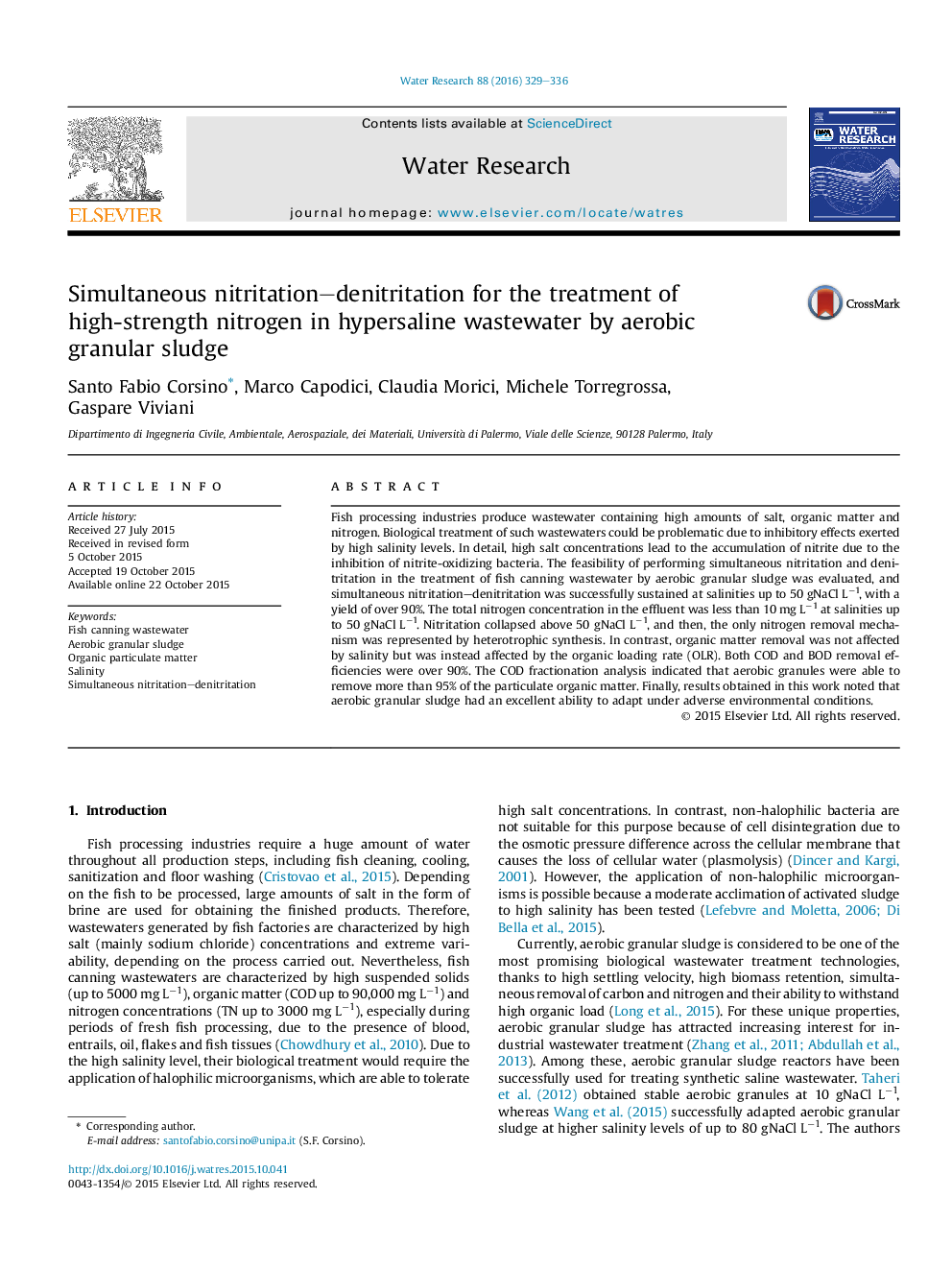| Article ID | Journal | Published Year | Pages | File Type |
|---|---|---|---|---|
| 6365454 | Water Research | 2016 | 8 Pages |
â¢Aerobic granular sludge was successfully used to treat fish-canning wastewater.â¢Gradual acclimation strategy to high salinity level avoid AOB inhibition.â¢Simultaneous nitritation-denitritation was maintained up to 50 gNaCl Lâ1.â¢Heterotrophic bacteria was not affected by salt rather than OLR.â¢AGS exhibited excellent removal capability toward particulate organic matter.
Fish processing industries produce wastewater containing high amounts of salt, organic matter and nitrogen. Biological treatment of such wastewaters could be problematic due to inhibitory effects exerted by high salinity levels. In detail, high salt concentrations lead to the accumulation of nitrite due to the inhibition of nitrite-oxidizing bacteria. The feasibility of performing simultaneous nitritation and denitritation in the treatment of fish canning wastewater by aerobic granular sludge was evaluated, and simultaneous nitritation-denitritation was successfully sustained at salinities up to 50 gNaCl Lâ1, with a yield of over 90%. The total nitrogen concentration in the effluent was less than 10 mg Lâ1 at salinities up to 50 gNaCl Lâ1. Nitritation collapsed above 50 gNaCl Lâ1, and then, the only nitrogen removal mechanism was represented by heterotrophic synthesis. In contrast, organic matter removal was not affected by salinity but was instead affected by the organic loading rate (OLR). Both COD and BOD removal efficiencies were over 90%. The COD fractionation analysis indicated that aerobic granules were able to remove more than 95% of the particulate organic matter. Finally, results obtained in this work noted that aerobic granular sludge had an excellent ability to adapt under adverse environmental conditions.
Graphical abstractDownload high-res image (288KB)Download full-size image
